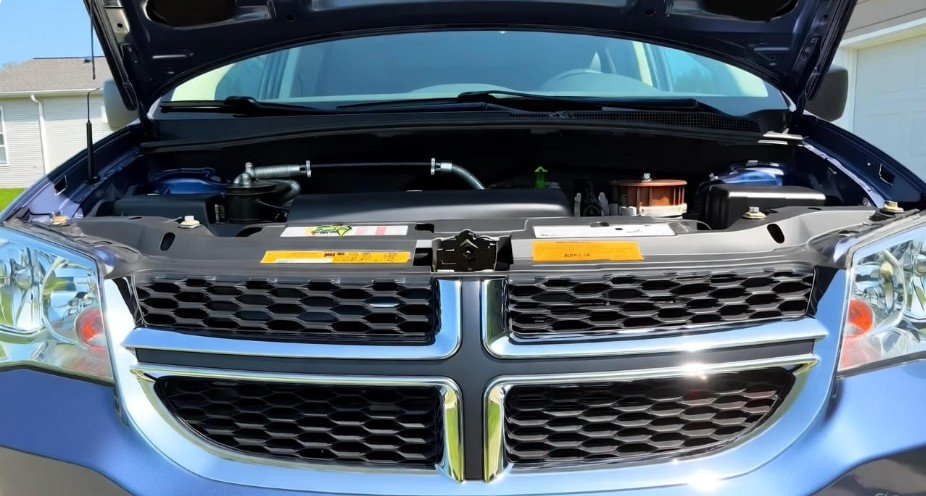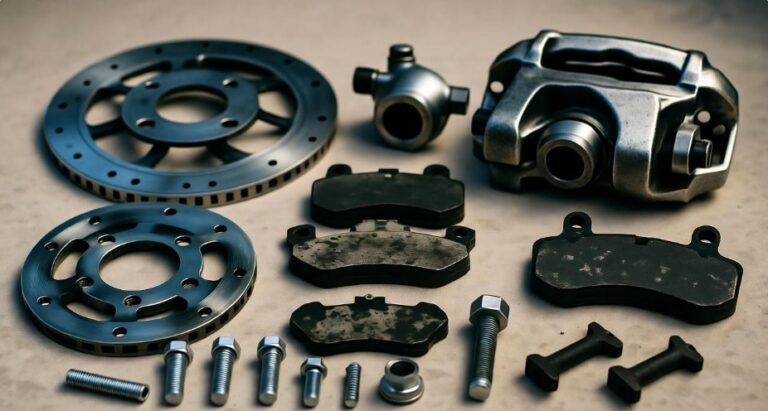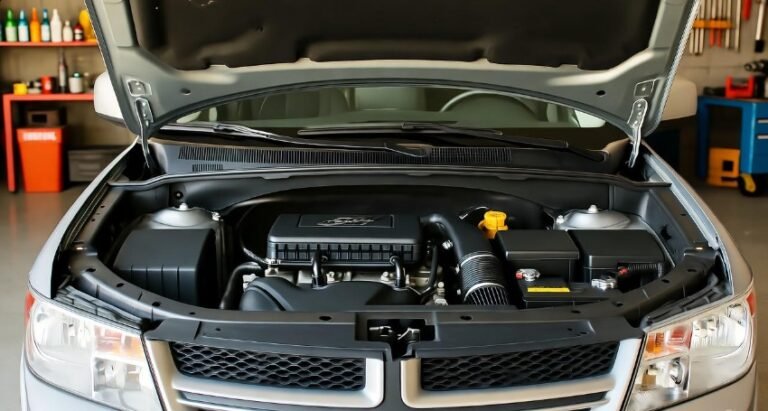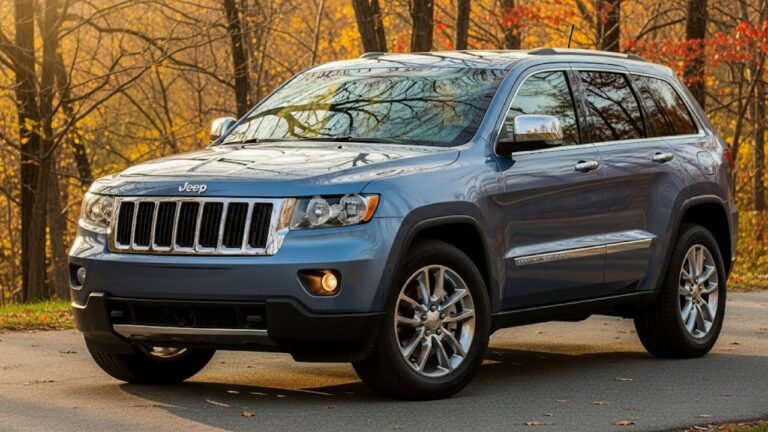How Much Freon in Dodge Caravan: The Essential Guide to Refrigerant Levels

The Dodge Caravan has earned its place in many families’ lives. It is a minivan that offers comfort, room, and a smooth drive. Whether used for family trips, daily commutes, or long highway drives, the Caravan is known for being reliable. One part of the driving experience that many people do not think about until it stops working is the air conditioning system. When the air blows warm in the middle of summer, frustration can build fast. That is when you begin to wonder about refrigerant. More specifically, you might ask, how much Freon in Dodge Caravan is needed for proper cooling. Even though this seems like a small detail, the amount of refrigerant in your AC system can change how well it cools. It also affects the life of the compressor and other components.
Understanding refrigerant and how it works is important. Once you understand the basics, you can make better decisions about repair, maintenance, and when to seek help. Whether your Caravan is an older model or a newer one, refrigerant type and capacity can vary. That makes knowing your model year important. So, before opening a can of refrigerant or heading to the mechanic, learning this information can save time and money. In this guide, we will break down refrigerant types, capacity ranges, signs of low refrigerant, and why keeping the right level matters. The goal is to make things clear and simple so you feel confident caring for your AC system.
In This Article
- 1 Understanding Freon and Why It Matters
- 2 How Much Freon Does a Dodge Caravan Need
- 3 Why Proper Refrigerant Level Matters for Cooling Performance
- 4 Clear Signs That Your Dodge Caravan Has Low Refrigerant
- 5 Steps to Check and Recharge Freon in Your Dodge Caravan
- 6 DIY vs. Professional AC Recharge
- 7 Maintenance Tips for Your Dodge Caravan’s AC System
- 8 Common Misconceptions About Freon in Dodge Caravan
- 9 FAQs: How Much Freon in Dodge Caravan
- 10 Conclusion: Keeping Your Dodge Caravan Cool and Comfortable
Understanding Freon and Why It Matters
The term Freon is often used to describe refrigerant in general. But Freon is actually a brand name. In older Dodge Caravans, especially those before 1994, the common refrigerant used in the AC systems was R-12 Freon. At the time, R-12 was standard and worked very well. However, R-12 was later found to be harmful to the ozone layer. Because of this, it was phased out. It is no longer produced for regular automotive use. If you have a Caravan older than 1994, it may have originally come with R-12. Many of these vehicles have since been converted to use newer refrigerants. The conversion process must be done correctly because mixing refrigerants can cause damage.
After 1994, R-134a became the new standard. R-134a is more environmentally friendly and is commonly used in many vehicles. Most Dodge Caravans from 1994 to recent years use R-134a. This refrigerant is easy to find and safe to use when handled properly. However, more recent vehicles in the automotive world are moving toward another refrigerant known as R-1234yf, which is even safer for the environment. Some very late model Caravans may use this type, although R-134a is still the most common for this minivan.
Understanding refrigerant type matters because using the wrong one can damage your AC system. It can also lead to leaks or performance issues. When working with your Caravan, always check the label under the hood or refer to the owner’s manual. The label usually lists the exact type of refrigerant and the recommended capacity. If you are unsure, asking a professional is always wise. Many mechanics can identify the refrigerant system quickly and guide you on what your vehicle needs.
How Much Freon Does a Dodge Caravan Need
Now let’s move to the main question: how much Freon in Dodge Caravan is required for proper cooling. The amount depends on the model year and whether the vehicle has front AC only or both front and rear AC. The front AC is for the driver and passenger area. A rear AC system sends cool air to the back seats and requires more refrigerant.
For many older models with R-134a refrigerant, the refrigerant capacity often falls within a certain range. For example, a Caravan from the late 1990s might need around 30 to 35 ounces for the front system alone. If it has rear air, it could need around 32 to 36 ounces. Moving into the 2000s, the refrigerant amount increased slightly, ranging from about 36 to 44 ounces for front AC. With rear air, it can go up to 42 to 50 ounces. More recent Caravans, especially those from 2008 to the late 2010s, often need less. These models usually require around 25 to 35 ounces for front AC and around 20 to 30 ounces if they have rear air.
The variation happens due to changes in system design, condenser size, compressor type, and refrigerant efficiency. This is why checking your exact model year is essential. Even two Caravans from the same year can have small differences if one has extra cooling features. If you do not have the original owner’s manual, you can find the specification written on the AC system label usually located on the radiator support, under the hood, or near the compressor.
Why Proper Refrigerant Level Matters for Cooling Performance
The air conditioning system in your Dodge Caravan does not cool the air by simply blowing cold air. Instead, it works through the refrigerant cycle, which absorbs heat from inside the vehicle and releases it outside. For that cycle to work, the refrigerant must be at the correct pressure level. Too little refrigerant means the system cannot absorb enough heat. This leads to weak cooling, longer cooling times, and warm air blowing from the vents on hot days.
On the other hand, too much refrigerant is also a problem. Many people believe adding more refrigerant gives stronger cooling. But that is not true. Overcharging the system can increase pressure to dangerous levels. This can damage the compressor, which is one of the most expensive AC parts to replace. It can also cause blockages in the lines or lead to leaks. That is why guessing the refrigerant level is not a good idea. Proper measurement using AC gauges is best.
When the refrigerant level is correct, the AC system works smoothly. The air gets cold faster. The compressor runs less often, which improves fuel efficiency. The AC components also last longer. So, maintaining the right refrigerant amount is not just about comfort. It is about protecting your vehicle’s AC system and avoiding expensive repairs later.
Clear Signs That Your Dodge Caravan Has Low Refrigerant
You do not need to be a mechanic to notice when the refrigerant is low. Your Caravan will give clues. For example, if the system takes a long time to cool or never gets cold enough, that usually means the refrigerant level is low. You may notice the air blowing out feels cool at first, then turns warm again. That happens when the compressor cannot stay engaged due to low pressure.
Sometimes, there are physical clues like frost or ice forming on pipes under the hood. Another common sign is hissing when the AC turns on. That sound can mean refrigerant is escaping through a small leak. If you notice a sweet or chemical odor inside the vehicle when the AC is on, that can also suggest a leak in the evaporator.
Paying attention to these early signs can prevent bigger issues. If you ignore them, the compressor might wear out. Replacing a compressor costs far more than recharging the refrigerant. So, catching the issue early saves both time and money.
Steps to Check and Recharge Freon in Your Dodge Caravan
Before adding any refrigerant, it’s important to check the current level. Using a set of AC gauges is the safest method. First, locate the low-pressure port under the hood; this is where the refrigerant is added. The low-pressure port is usually on the larger diameter aluminum tubing between the evaporator and the compressor. Never use the high-pressure side for charging—it’s dangerous.
Once the gauges are connected, turn the AC system on to the maximum cooling setting. Read the pressure levels. If they are below the manufacturer’s recommended range, a recharge is needed. Adding refrigerant is not simply pouring it in. It must be done carefully to avoid overcharging. A scale or measuring cup is helpful for accuracy. Remember, even a few ounces too much can strain the system. If you’re not confident, a professional can ensure the correct amount is added and check for leaks at the same time.
DIY vs. Professional AC Recharge
Many people wonder if they can add Freon themselves. Technically, it is possible with the right tools, but there are risks. Handling refrigerant incorrectly can damage the AC system, and R-134a is a pressurized gas. Mishandling can lead to frostbite or injury. Additionally, overcharging or undercharging will reduce efficiency and may void warranty if your Caravan is still covered.
Professional mechanics use certified equipment. They can measure the actual refrigerant level accurately, identify leaks, and ensure the system is operating at the right pressure. Many shops also perform a vacuum test, which removes old refrigerant and air from the system before recharging. This guarantees that the AC system works efficiently and safely. While DIY charging can save money upfront, professional service protects your AC system in the long run.
Maintenance Tips for Your Dodge Caravan’s AC System
Maintaining your AC system is not just about adding refrigerant. Several simple steps can extend its life:
-
Check refrigerant levels regularly: Even small leaks over time can reduce performance.
-
Keep the condenser clean: Dirt, leaves, or bugs can block airflow and reduce cooling efficiency.
-
Run the AC regularly, even in winter: This keeps seals lubricated and prevents leaks.
-
Inspect belts and hoses: Worn or cracked belts can reduce compressor performance.
-
Listen for unusual sounds: Hissing, squealing, or clanking could signal a refrigerant or mechanical issue.
These steps are small investments in time but can save hundreds in repairs. A well-maintained AC system ensures that your Caravan stays comfortable year-round.
Common Misconceptions About Freon in Dodge Caravan
A lot of drivers believe that their AC system is “self-regulating.” They think it will always work and cool without issue. In reality, refrigerant gradually leaks over time. Even without noticeable leaks, the AC efficiency may slowly drop. Another misconception is that adding more Freon increases cooling. As mentioned, too much refrigerant is dangerous. It can cause high pressure, damaging the compressor or even popping seals.
Some also assume that all refrigerants are the same. Using the wrong type, like R-12 in a system designed for R-134a, can lead to catastrophic failure. Always confirm the type required for your model year. Remember, AC maintenance is about balance: the right type, correct amount, and proper system care.
FAQs: How Much Freon in Dodge Caravan
1. How Much Freon Does a Dodge Caravan Hold?
It varies by model year and whether it has rear AC, but generally, it ranges from 1.5 to 2.5 pounds.
2. Is It Possible to Add Freon Myself?
Yes, but professional help is recommended. Improper handling can damage your AC or cause injury.
3. How Often Should I Recharge My Caravan’s AC?
There is no set schedule. Monitor cooling performance. If air blows warm, check refrigerant levels and consult a professional.
4. What Are Signs of Low Freon?
Warm air from vents, slow cooling, unusual noises, or frost on pipes are all indicators of low refrigerant.
5. Can Overcharging Harm My Dodge Caravan?
Absolutely. Overcharging can increase pressure, leading to compressor damage or leaks.
6. Does My Caravan Require R-12 or R-134a?
Caravans before 1994 typically used R-12. Models after 1994 commonly use R-134a. Check your owner’s manual or under-hood label to confirm.
7. Can a Leak Cause AC Failure?
Yes. Even small leaks will eventually reduce cooling efficiency and may damage the system over time.
8. Can I Run AC Without Freon?
No. The AC system relies on refrigerant for heat absorption. Running it empty can damage components quickly.
Conclusion: Keeping Your Dodge Caravan Cool and Comfortable
Knowing how much Freon in Dodge Caravan is needed is essential for maintaining a cool, comfortable ride. While the exact amount depends on your model year and AC configuration, following manufacturer guidelines ensures your system runs efficiently. Low or excessive refrigerant can lead to poor cooling or costly repairs, so proper maintenance is key.
Regular checks, listening for signs of trouble, and professional servicing when necessary will protect your AC system. The Dodge Caravan is more than just a minivan—it’s part of family life and daily routines. Keeping its air conditioning system in top shape means you can enjoy every drive, no matter how hot it gets outside. With the right knowledge and care, your Caravan will keep running smoothly for years to come.
Disclaimer: This article is for informational purposes only. Always refer to your owner’s manual or consult a qualified mechanic for accurate guidance regarding your Dodge Caravan’s refrigerant system.






